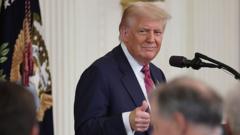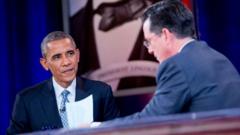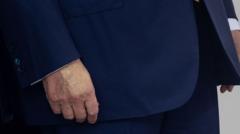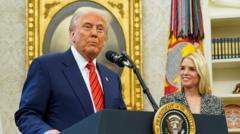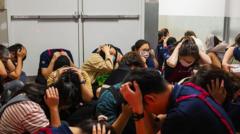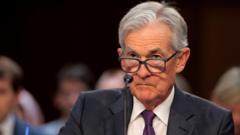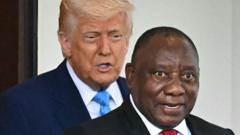The U.S. Court of International Trade's decision against President Trump's tariffs has sparked an appeal, raising concerns about the future of his unilateral trade strategy, which has drawn a mix of criticism and support from various economic sectors.
Legal Challenge to Trump’s Tariffs Raises Questions on Economic Strategy
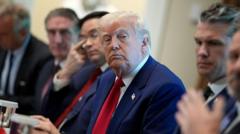
Legal Challenge to Trump’s Tariffs Raises Questions on Economic Strategy
A recent court ruling challenges President Trump's ability to impose tariffs, forcing a reevaluation of his economic tactics and their implications for global trade.
Since his return to the presidency, Donald Trump has adopted tariffs as his primary economic strategy, imposing duties of significant rates on both allies and adversaries. His approach has generated unpredictability in international markets and left global leaders in a state of anticipation regarding future moves. Major retailers in the U.S. have cautioned consumers about potential price hikes and shortages, attributing these shifts to Trump's tariff policies—it’s a volatile game of economic chess.
Trump asserts that his unilateral authority to impose tariffs is necessary in response to a perceived national economic emergency requiring swift actions that Congress can't keep pace with. This has allowed him to issue threats to countries, as demonstrated during a recent clash over negotiations with the European Union.
However, a recent ruling by the U.S. Court of International Trade determined that Trump has exceeded his emergency powers, citing that nearly all tariffs imposed were illegal. Following this ruling, the White House has lodged an appeal, contending that a decision against Trump would undermine his global negotiating position and weaken the government's emergency response capabilities.
On social media, Trump criticized the court’s ruling, expressing his disagreement and labeling it as “wrong.” Until the legal battle concludes, the tariffs remain in effect, thanks to a stay granted by a federal appeals court. This ongoing legal fight highlights the changing landscape of Trump's tariff strategy and its reliance on uncertain legal grounds.
Tariff policies established by the Trump administration have seen dramatic shifts; for instance, tariffs on Chinese goods fluctuated from extreme highs of 145% down to 30%. Such erratic changes have prompted analysts to coin terms like “Taco trade,” suggesting that Trump's threats often result in withdrawal rather than action.
His former ambassador to the EU, Gordon Sondland, noted that Trump's negotiating style is rooted in leveraging immediate economic pressure to prompt responses from negotiating counterparts. Still, if Trump's tariff powers are curtailed by the courts, he faces a potential shift towards seeking legislative approval for tariffs, undermining the element of surprise that defines his strategy.
Trump has remained steadfast in his belief that tariffs are essential to solving many economic challenges, eager to use them as tools to holistically restore U.S. manufacturing by incentivizing American production. Despite opposition from experts, Trump continues to emphasize the revenue tariffs are generating for the government, framing it as a success.
Economist Justin Wolfers critiques this strategy as counterproductive, arguing that permanent tariffs would better guide businesses to invest in manufacturing in the U.S. In this precarious economic environment, with the court ruling adding further complexity, the battle over tariffs is far from over. Trump's trade advisor, Peter Navarro, suggested that even if the court ruling doesn't favor the administration, they will find alternative avenues to push their agenda forward.
As Trump’s legal and economic maneuvers continue, global trading partners find themselves in a delicate position, having to remain vigilant and prepared for his next unpredictable move in this ongoing saga. The potential escalation of this legal challenge could soon lead to a Supreme Court showdown, further complicating the trajectory of American trade policy.

